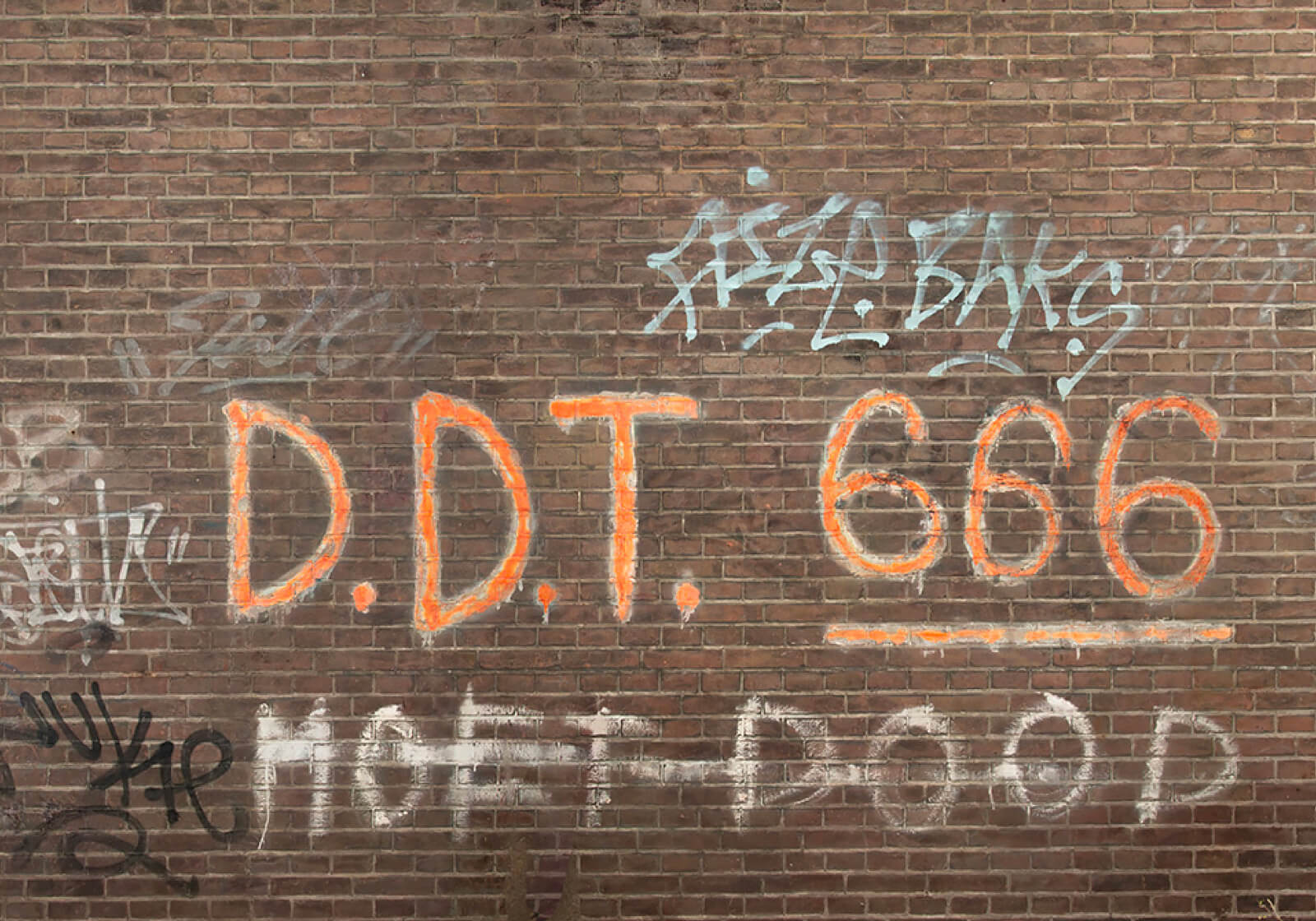AMSTERDAM – The graffiti ‘D.D.T. 666’ is the only remaining original Dr. Rat (Ivar Vičs, 21 May 1960 – 29 June 1981) graffiti in Amsterdam. For that reason it was recently restored on the initiative of Stadsdeel Zuid of the municipality of Amsterdam. The work is a unique expression of the turbulent seventies and eighties in Amsterdam, when young people openly resisted the establishment and squatters and punks made themselves heard in the city.
Dr. Rat
On the wall in Hondecoeterstraat, D.D.T. 666 has been written with a block brush for 44 years. Ivar Vičs, one of the first graffiti writers, was referring to the name of punk club Dirty Dutch Trix 666 on Sarphatistraat. Together with Hugo Kaagman, Ludwig Witsch and Diana Ozon, he was among the founders. An angry visitor to the punk club added to the piece: MOET DOOD (MUST DIE), after he was expelled from the club. After Vičs tragic death from an overdose in 1981, many graffiti writers in the following years also placed tags on the same wall.

After a period in which Ivar Vičs mainly did graffiti, he devoted himself more to being an artist in the late 1970s. In his characteristic own punk style he realized many expressions, including the Koecrandt, posters, flyers and paintings. His work was exhibited in Museum Fodor on the Keizersgracht and he joined the artist group SKG. A group led by Erik Hobijn with Peter Giele and David Veldhoen. An absolute highlight is the ‘Terrorist Congress’ organized by SKG in 1980 in Paradiso. Ivar Vičs takes care of the promotion. It became a legendary event in which the spirit of the times was aptly portrayed and denounced.

Restoration
Stadsdeel Zuid took the initiative to restore and conserve the last remaining piece of Dr. Rat. Also the tags around D.D.T.666 of Delta, Curhz and Nuke, among others, were included. The restoration was carried out by the highly experienced restorers Antonio and Amarilla Rava. They are known for Keith Haring restorations around the world, including at the Market Hall in Amsterdam. The D.D.T. 666 graffiti from 1978 is unique. Because of a holly bush, the work was hidden for years and was spared. Through conservation, the work is now preserved as a cultural heritage of the city.

